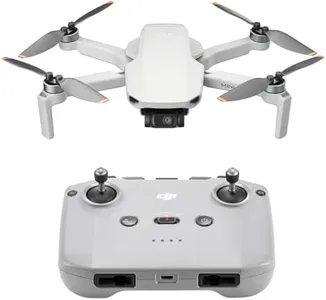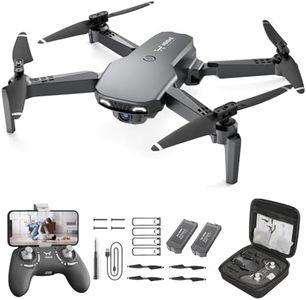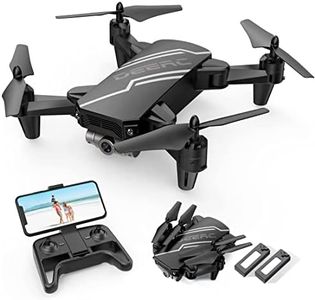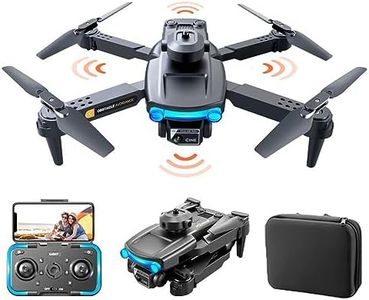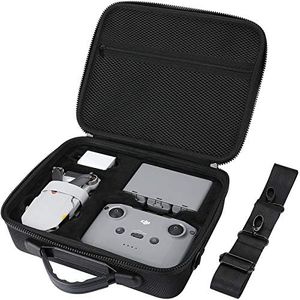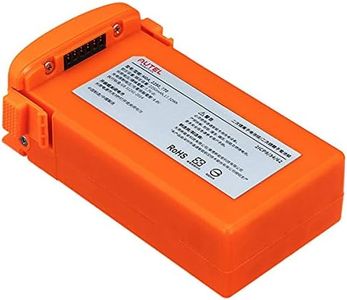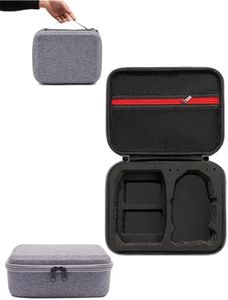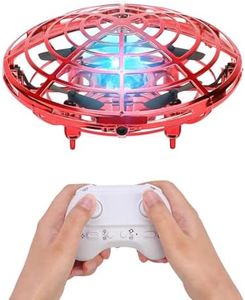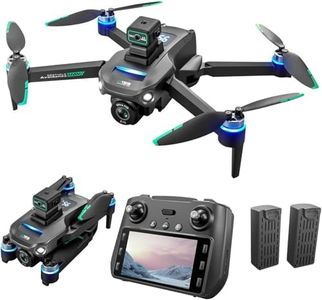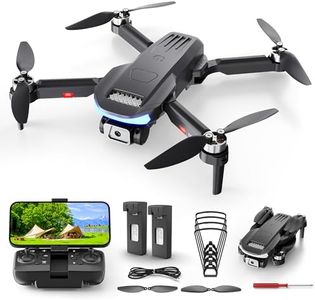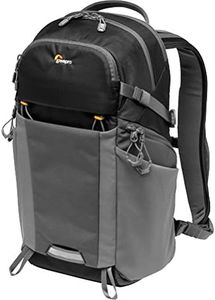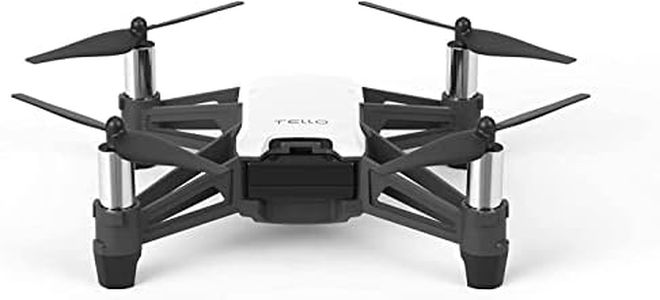We Use CookiesWe use cookies to enhance the security, performance,
functionality and for analytical and promotional activities. By continuing to browse this site you
are agreeing to our privacy policy
10 Best Travel Drones
From leading brands and best sellers available on the web.Buying Guide for the Best Travel Drones
Choosing a travel drone is all about balancing your need for portability with the quality of aerial photos and videos you want. Since travel often involves carrying your gear for long distances, it’s crucial to look for a drone that is light and compact, yet capable enough to capture your adventures. Your choice should fit in with the type of trips you take, whether it’s hiking in the mountains or exploring cities, and suit your comfort level with drone flying and photography.Weight and SizeWeight and size determine how easy the drone is to carry, especially if you’re packing light. Lightweight and compact drones are easier to transport and usually fit into a backpack, making them perfect for frequent travelers and hikers. Heavier and larger drones might offer better performance but can be tiring to carry. Ask yourself how much extra bulk you’re willing to manage and whether you’ll need to pack the drone in a carry-on or checked bag. If you travel by plane often, always check airline rules about drone batteries and size.
Camera QualityCamera quality involves resolution, sensor size, and stabilization features that affect how your photos and videos look. Higher resolutions (like 4K video and 12MP or more for photos) mean sharper images, while a larger sensor helps in low-light conditions. Good stabilization reduces shaky footage. Casual users and social media sharers might do well with basic cameras, while those aiming for professional-looking shots will want higher specs. Decide how important image quality is for your travel memories and pick a camera that matches your ambitions.
Battery LifeBattery life, usually measured in minutes of flight time, determines how long you can use your drone before needing a recharge. Most travel drones offer between 15 to 35 minutes per flight. Shorter battery life is fine for quick sightseeing clips, but if you want longer flights or uninterrupted shooting, you’ll need a drone with better battery performance or plan to carry spare batteries (and ensure you can charge them on your travels). Think about your typical excursion length and how easy it will be to recharge on the go.
Portability (Foldability)Portability refers to how easily the drone folds or packs away. Foldable drones take up less space and protect delicate parts, which is very important during travel. If you move a lot with minimal luggage, look for drones that fold down to palm-size. If portability isn’t critical, fixed-arm designs can be fine, especially if durability or flight stability are your priorities.
Ease of UseEase of use covers how simple the drone is to set up, control, and fly, including features like beginner modes, automatic takeoff/landing, and obstacle avoidance. If you’re new to drones or want stress-free operation during your trip, choose a drone with user-friendly controls and supportive flight features. More advanced controls can be good for experienced pilots looking to do complex shots or maneuvers. Reflect on your skill level and comfort with flying, and let this guide your choice.
Flight RangeFlight range is the maximum distance the drone can fly from the remote control or your phone. A longer range means you can explore larger areas or get wide landscape shots, but may be regulated by local drone laws. For most travel scenarios, short to medium ranges are plenty, especially if you plan to keep your drone within visual line of sight. If you travel to remote or wide-open areas, consider a drone with a longer range, but always think of safety and the legal limits of the places you visit.
